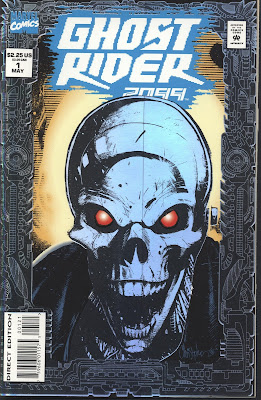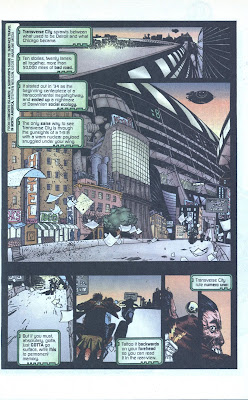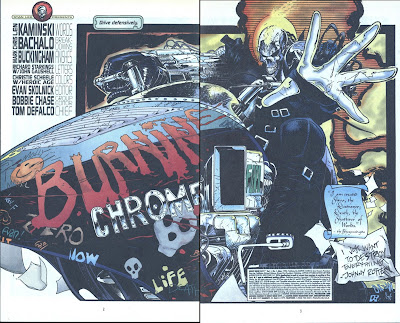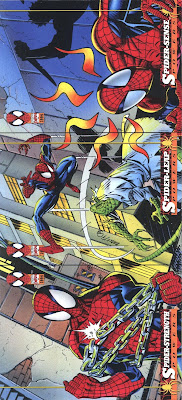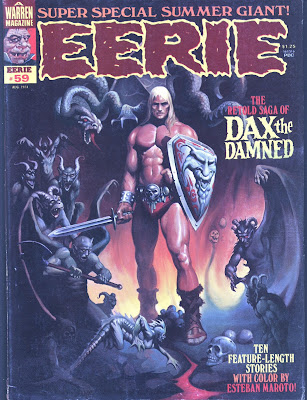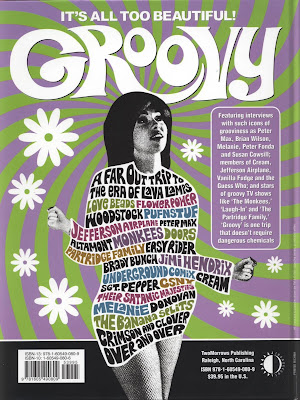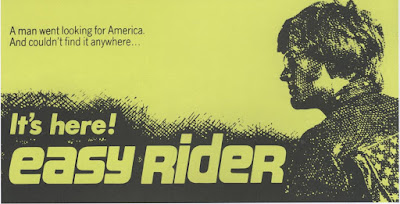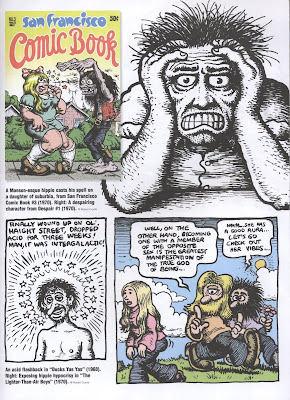Len Kaminski (writer)
Chris Bachalo and Mark Buckingham (art)
Marvel Comics, May 1994
According to Ronin Ro in his book Tales to Astonish: Jack Kirby, Stan Lee, and the American Comic Book Revolution (2004), in the early 1990s Stan Lee was increasingly disillusioned with the failure of Hollywood executives to greenlight production of a large-budget film featuring Marvel characters. Lee decided to return to scripting comic books, and one of his ideas was to create a new series of Marvel titles that were set a century into the future.
Marvel's editor at the time, Tom DeFalco, endorsed Lee's idea, and the Marvel 2099 imprint began in 1992 with the publication of Spider-Man 2099. Despite the advent of the Great Comic Book Crash of 1993, additional 2099 titles were rolled out in succeeding years, including Doom 2099, Hulk 2099, Punisher 2099, and X-Men 2099.
Ghost Rider 2099 kicked off in May 1994, and eventually ran for 25 issues until May 1996. That year most of the 2099 lineup was cancelled due to declining sales, and in December, Marvel declared bankruptcy.
The 2099 books were set in a shared dystopian, near-future world devoid of 'traditional' superheroes. There was a decided emphasis on incorporating the Cyberpunk aesthetic into all of the titles, and into Ghost Rider 2099 in particular.
Writer Len Kaminski took the inclusion of Cyberpunk elements to heart in this first issue of Ghost Rider 2099........perhaps a little to earnestly. Practically every panel has some message designed to remind the reader just how well Kaminski knows the genre.
Here's a panel where the speech balloon references the lead characters from William Gibson's Neuromancer and John Shirley's A Song Called Youth:
These kinds of cutesy callouts tend to give the book a gimmicky character. Things aren't helped by the artwork, which tries to simultaneously channel the artistic styles of Simon Bisley, Frank MIller, and Walt Simonson......and predictably winds up an incoherent mess, for the most part.
That said, Ghost Rider 2099 retains merit for taking all sorts of 80s tropes, like the dystopian cityscapes of the Judge Dredd comics, 'virtual reality', and Robocop-style urban policing and working them all together into a comic that, while flawed, continues to represent one of the better Cyberpunk-themed titles of the past 25 years.
Posted below is the entire first issue of Ghost Rider 2099. I've included scans of some of the advertisements appearing in the comic. By the start of '94 the trading card market was oversaturated, but Marvel and other major companies continued to churn out set after set............
